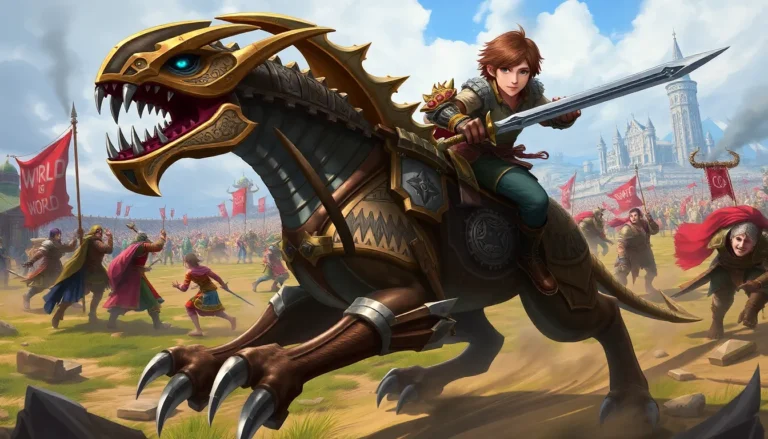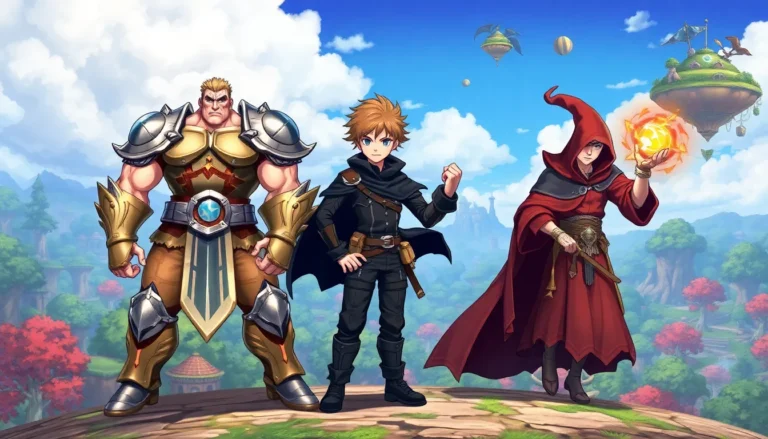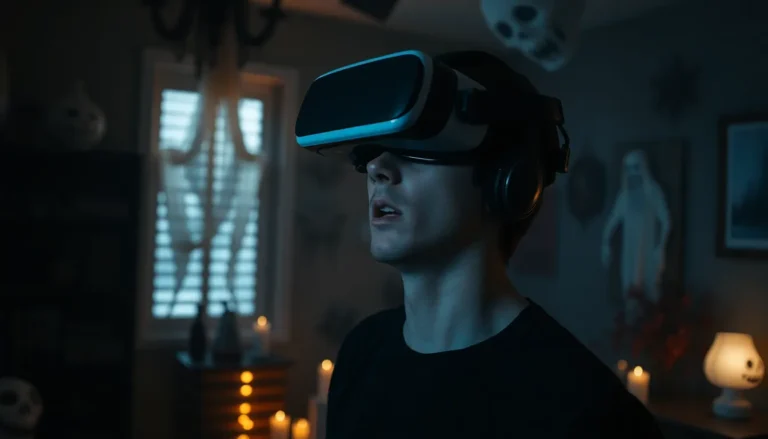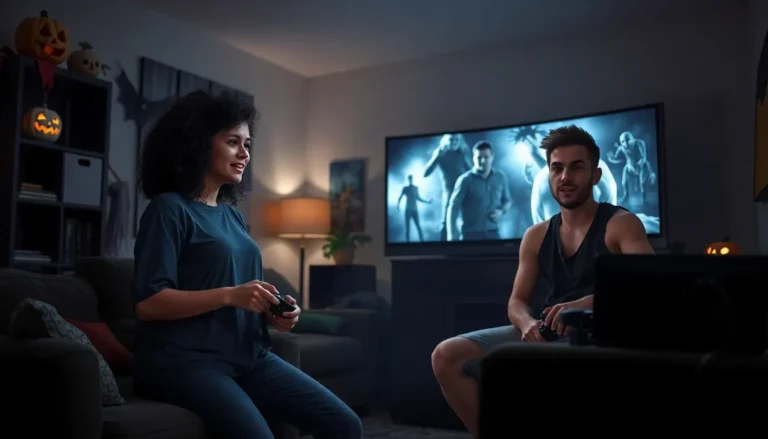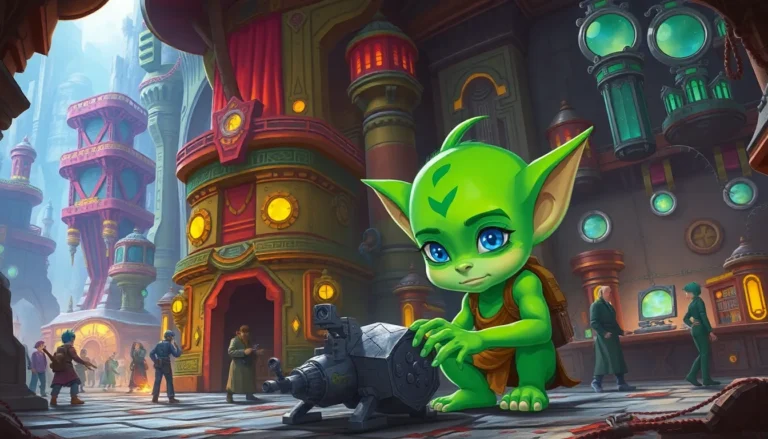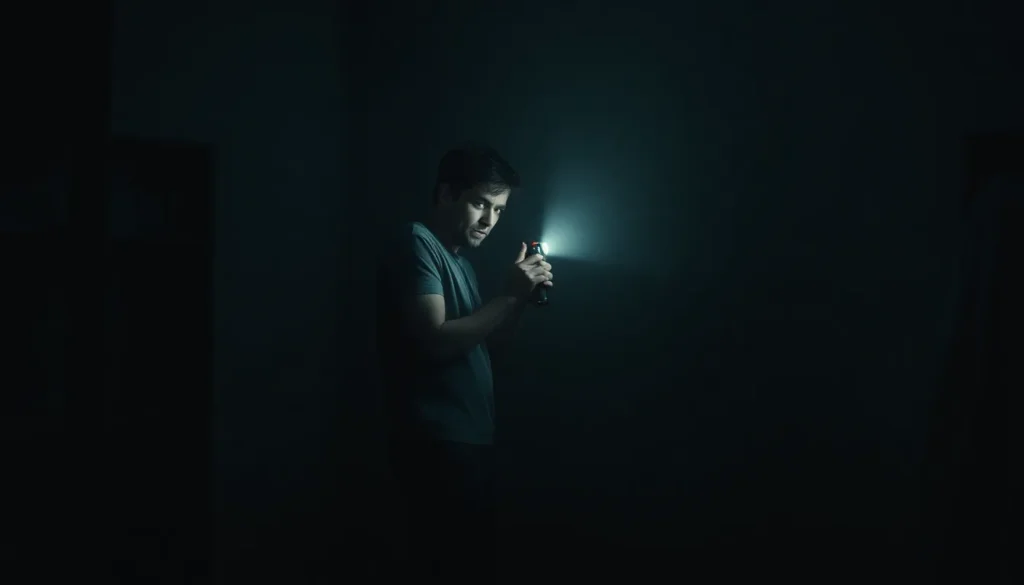Table of Contents
ToggleIn the dim glow of a flickering screen, first-person horror games invite players into a world where nightmares come to life. With heart-pounding suspense and adrenaline-pumping scares, these games transform ordinary living rooms into terrifying haunted houses. Players don’t just watch the horror unfold; they become part of the action, making every shadow and creak feel all too real.
Overview of First-Person Horror Games
First-person horror games offer a unique approach to psychological and survival horror. These titles immerse players in terrifying narratives, compelling them to navigate dark environments from a first-person perspective. Surrounded by chilling soundscapes and eerie visuals, players fully engage with the unfolding story.
Gameplay typically emphasizes exploration and puzzle-solving. Players must gather clues and items while evading or confronting threats, enhancing tension and adrenaline. Popular games, such as Amnesia: The Dark Descent and Outlast, exemplify how fear manifests through limited resources and overwhelming odds.
Characters often become central to the experience. Each game presents a protagonist with motivations that drive the narrative forward. Emotional investment heightens the stakes as players confront frightening entities and the unknown.
Innovative use of mechanics distinguishes first-person horror games. Features like flashlight limitations or stealth-based gameplay require players to strategize and remain alert. Each choice shapes the journey, leading to varying outcomes and replayability.
Moreover, the visual and auditory elements amplify horror elements. Realistic graphics create haunting imagery, while sound effects evoke an unsettling atmosphere. Players respond instinctively to sounds, making every creak or whisper a potential threat.
Multiplayer options increasingly appear in the genre. Cooperative gameplay allows friends to face terror together, combining teamwork and individual fears. Games like Phasmophobia showcase how shared experiences can enhance immersion and make horror more impactful.
First-person horror games redefine how players experience fear and excitement. The combination of interactive storytelling, character connection, and immersive designs creates memorable, chilling adventures. Each title showcases the genre’s evolution and its enduring appeal within the gaming landscape.
Key Characteristics of First-Person Horror Games
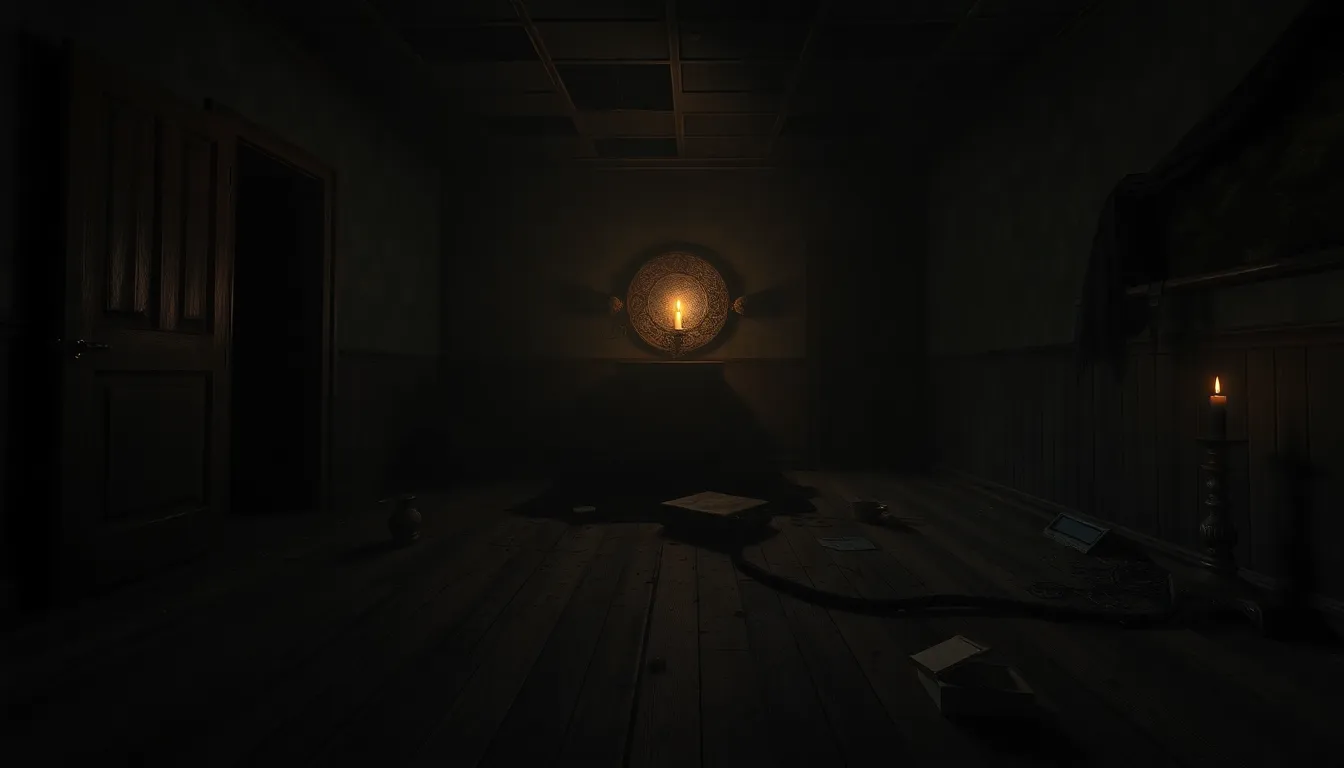
First-person horror games excel in delivering a uniquely immersive experience. Players often find themselves fully engaged in the chilling narratives and dark environments.
Immersive Gameplay
Immersive gameplay dominates first-person horror experiences. Exploration remains a core element, as players traverse unsettling settings filled with scattered clues. Engaging with surroundings creates a sense of vulnerability; threats feel ever-present. Puzzle-solving mechanics encourage creative problem-solving, often leading to tense moments as players navigate dangerous encounters. Limited resources heighten anxiety, forcing players to strategize their actions carefully. Characters depicted in these games often evoke empathy, grounding players in the unfolding story. Notable examples like Amnesia: The Dark Descent exemplify this level of depth, where every decision becomes pivotal. Players become active participants in horror rather than passive observers.
Atmospheric Sound Design
Atmospheric sound design plays a crucial role in the horror experience. Each creak in the floorboards or distant whisper amplifies tension, fostering an unsettling environment. Sound effects meticulously crafted heighten realism, drawing players deeper into the narrative. Utilization of silence becomes just as impactful; moments of calm often precede imminent danger. Music complements gameplay, enhancing emotional responses and reflecting the player’s anxiety. The strategic use of audio cues guides players’ actions, making them aware of lurking threats. Games like Outlast demonstrate how effective sound design can create bone-chilling moments. Enveloping sounds resonate, ensuring players remain engrossed in their terrifying journey.
Popular First-Person Horror Games
First-person horror games captivate players with their immersive experiences and chilling narratives. Several titles stand out for their unique gameplay and intense atmospheres.
Amnesia: The Dark Descent
Amnesia: The Dark Descent revolutionized the genre with its emphasis on psychological horror. Players control Daniel, who explores a dark castle while grappling with memory loss. The game captivates with its unsettling ambiance and limited resources, pushing players to solve puzzles and avoid terrifying foes. A standout mechanic includes the sanity meter, which heightens tension as players confront supernatural elements. The absence of combat forces strategic thinking, enhancing the sense of vulnerability. Critics praise its ability to evoke genuine fear and anxiety, making it a cornerstone of first-person horror.
Outlast
Outlast invites players to assume the role of investigative journalist Miles Upshur. Exploring an abandoned psychiatric hospital, players encounter horrifying experiments and deranged inmates. The game stands out with its innovative use of a night vision camera, illuminating dark passages while offering minimal defense. Stealth gameplay becomes crucial as players evade grotesque threats, relying on quick thinking and agility. Its immersive storytelling and shocking twists contribute to a relentless atmosphere. Players often describe their experiences as nerve-wracking, solidifying Outlast‘s place in horror gaming history.
Phasmophobia
Phasmophobia redefines multiplayer horror by allowing friends to investigate haunted locations together. As ghost hunters, players gather evidence using various tools to identify supernatural entities. Cooperative gameplay fosters teamwork and shared experiences, amplifying the fear factor. Unique mechanics, such as voice recognition, add realism as ghosts react to players’ conversations. The game’s dynamic environments and escalating challenges create tension throughout the investigation. Players often express the thrill of facing terror with friends, making Phasmophobia a standout title in the genre.
The Evolution of First-Person Horror Games
First-person horror games have gone through significant changes since their inception, shaping the player experience profoundly. Early entries, such as Doom, introduced players to 3D environments filled with monsters, laying the groundwork for what would become a staple of the genre. As technology improved, so did the ability to create more immersive worlds. Games like Half-Life made strides in melding narrative and gameplay, allowing for deeper engagement with horror elements.
With the release of Amnesia: The Dark Descent in 2010, psychological horror achieved new heights. The mechanics emphasized vulnerability, forcing players to rely on exploration and problem-solving while avoiding confrontation. Limited resources heightened tension, making each decision critical. This defining title inspired a wave of similar games, reinforcing the importance of atmosphere and narrative in creating fear.
Graphics and sound design have also evolved dramatically. Contemporary titles leverage advanced visual fidelity to create realistic settings. Subtle details enhance immersion, while eerie soundscapes keep players on edge. Silence becomes a powerful tool, suggesting that danger is imminent.
As multiplayer experiences gained traction, games like Phasmophobia transformed how horror can be experienced. Cooperative gameplay fosters shared tension, amplifying the fear factor when friends face supernatural threats together. This shift invites a new dynamic, engaging players in collective experiences.
Character development remains a pivotal aspect throughout the genre’s evolution. Compelling protagonists offer emotional depth, ensuring players are invested in their journeys. With innovative gameplay mechanics, psychological elements, and a focus on atmosphere, first-person horror games continue to push boundaries, consistently evolving while capturing the essence of fear.
Future Trends in First-Person Horror Games
Emerging technologies are poised to revolutionize first-person horror games. Virtual reality plays a significant role, offering players an immersive experience that heightens fear and tension. This technology allows for an unmatched level of engagement, where players physically react to horror elements in their surroundings.
The expansion of artificial intelligence enhances gameplay possibilities, making enemies smarter and more unpredictable. Mechanisms such as procedural generation create unique environments and encounters, ensuring that every playthrough feels fresh and daunting for players. As a result, players encounter different challenges each time, increasing replayability.
Storytelling continues to evolve, with more games emphasizing dynamic narratives that adapt based on player choices. This trend supports deeper emotional investments, allowing players to shape their experiences within dark and foreboding settings. Enhanced character arcs drive players further into the plot, creating a connection that amplifies fear.
Community-driven content is gaining traction as well. Players can now create their own horror experiences and share them with others through platforms designed for user-generated content. These contributions foster a collaborative environment and expand the genre’s creative horizons.
Next-gen graphics promise photorealistic environments, enhancing visual immersion. Improved lighting and shadow systems will create a more intense atmosphere, dramatically affecting how players perceive threats and navigate challenges.
Multiplayer experiences are anticipated to further diversify. Cooperative horror games encourage teamwork under pressure, where friends rely on each other amid terrifying scenarios. This trend enhances social interactions, making terrifying encounters more memorable.
Overall, future trends in first-person horror games emphasize innovation and interactivity, promising to deepen the emotional connection players feel as they navigate fear-filled worlds.
First-person horror games have transformed the gaming landscape by immersing players in chilling narratives and terrifying environments. Their unique blend of psychological tension and interactive gameplay keeps players on the edge of their seats. As technology continues to evolve, these games are set to become even more engaging and immersive.
With advancements in virtual reality and artificial intelligence, the potential for deeper emotional connections and more realistic experiences is immense. The future promises to bring innovative storytelling and cooperative gameplay, making first-person horror an ever-evolving genre. As players navigate these fear-filled worlds, the thrill of survival and exploration will continue to captivate audiences, ensuring that first-person horror remains a beloved staple in gaming.


